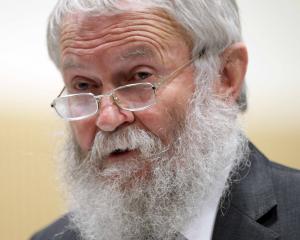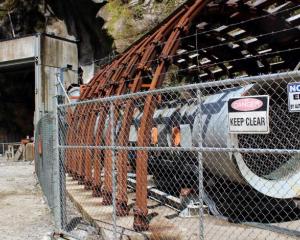
From October 1, urgent after-hours GP clinics on the West Coast were replaced by telehealth provider Ka Ora Telecare with some in-person clinical back-up.
Primary health organisation West Coast Health, which is contracted by Te Whatu Ora to provide primary health care services on the coast, has led the changes.
It is understood the after-hours GP clinics were operating at a loss and struggling for staff.
Both the Association of Salaried Medical Specialists and the New Zealand Nurses Organisation oppose the cuts, saying patients will be put at risk.
West Coast Health chief executive Caro Findlay said in the first three weeks of the telehealth service, Ka Ora had received 201 calls from people across the West Coast after hours and on weekends.
Between 10 to 15% of those calls were referred to an in-person service for further care, while Ka Ora called an ambulance to transport seven of those callers to hospital.
Findlay said roughly half of the callers were from the Grey District, a quarter from Buller and a quarter from Westland.
"It feels like there has been a pretty good transition between the numbers of people that sought care face-to-face and the number of people using Ka Ora as their first line provider."
Findlay said West Coast Health had received two complaints about the service - both relating to wait times when calling Ka Ora.
One person had to wait when calling on the first weekend when demand for the service was higher than expected and was dealt with promptly, she said. The second complainant had waited on the line for just over two minutes before hanging up.
"This is not an emergency service, you ring 111 and you expect them to pick up the phone straight away but this is a primary care service, they are not available immediately but 95 percent of their calls are answered in under three minutes."
She said the primary health organisation planned to do a one-month review of the call data after the first month, with a more extensive review after six months.
"Our data capture so far shows that there haven't been any spike in presentations to the ED [at Te Nīkau, Grey Hospital] or the ASU [acute stabilisation unit at Buller Health] in Westport ... and there hasn't been a massive impact on St John [Ambulance], they are seeing the same sort of numbers."
Findlay said information packs about the Ka Ora service and how it worked had been distributed to 16,000 households across the West Coast from Karamea to Haast, but she said there were a couple of instances where some streets and those in rural areas had been missed. Information had been delivered directly to them.
West Coast Health had also put ads in local newspapers, on the radio, engaged with community organisations and done a social media campaign to advise residents of the service and how it worked.
"When we were implementing the service we were really up against from a timeframe perspective and we didn't have as much time to go to community as we would have liked so we will do that at the six-month stage when we have some data and insight into how the service is working."
Patient Voice Aotearoa's Malcolm Mulholland said he had heard from members of the community that they still did not know how to contact Ka Ora.
"Everybody was meant to have the relevant information by 1 October, to learn that people are still waiting on that information is alarming.
"People want to know where they can ring when their health does take a turn and to know there are people out in the community who don't have that information is very concerning."
He said despite the introduction of Ka Ora, the same issues remained in Buller, highlighted by the recent case of an 84-year-old woman who was sent home without a diagnosis after going to Buller Health/Te Rau Kawakawa.
She later called 111 for an ambulance and had to wait for it to come 100km from Greymouth.
"She had a two-hour delay in being ambulanced from Westport to Greymouth because there was a patient already being transferred from Westport to Greymouth."
After arriving at Te Nīkau Greymouth Hospital, she was diagnosed with an obstructed bowel and underwent surgery.
"To hear that there are still cases like that happening, where the pattern seems to be an overrun doctor at Buller Hospital, followed by a lack of ability for people to be attended to in an emergency situation, it's extremely alarming."
Mulholland said he had heard from some residents that they did not have faith that a telephone consultation service could replace being seen by a medical professional, face-to-face.
The health system across New Zealand was in crisis, but those in rural areas were at the pointy end and suffering from a lack of access to services, he said.














